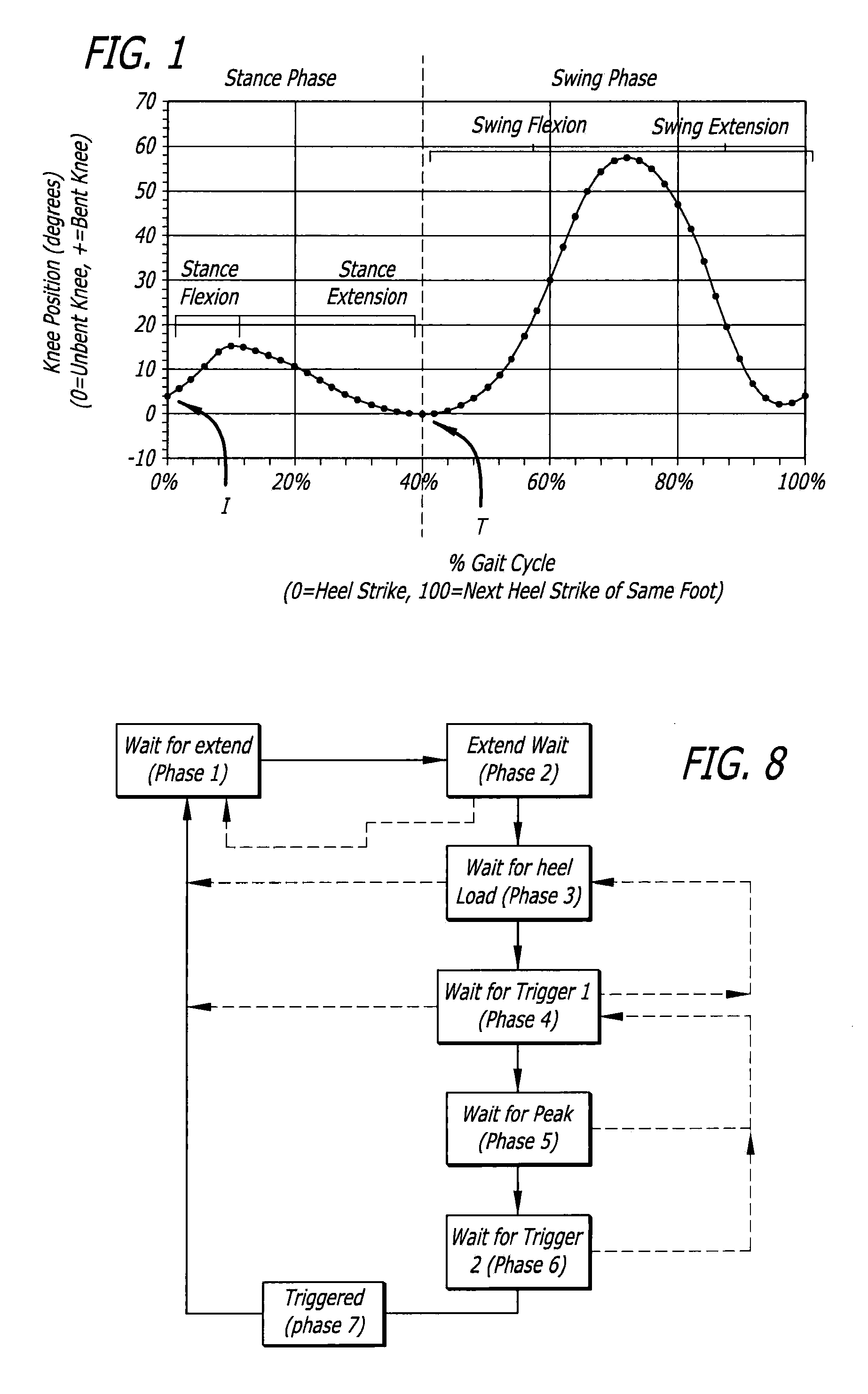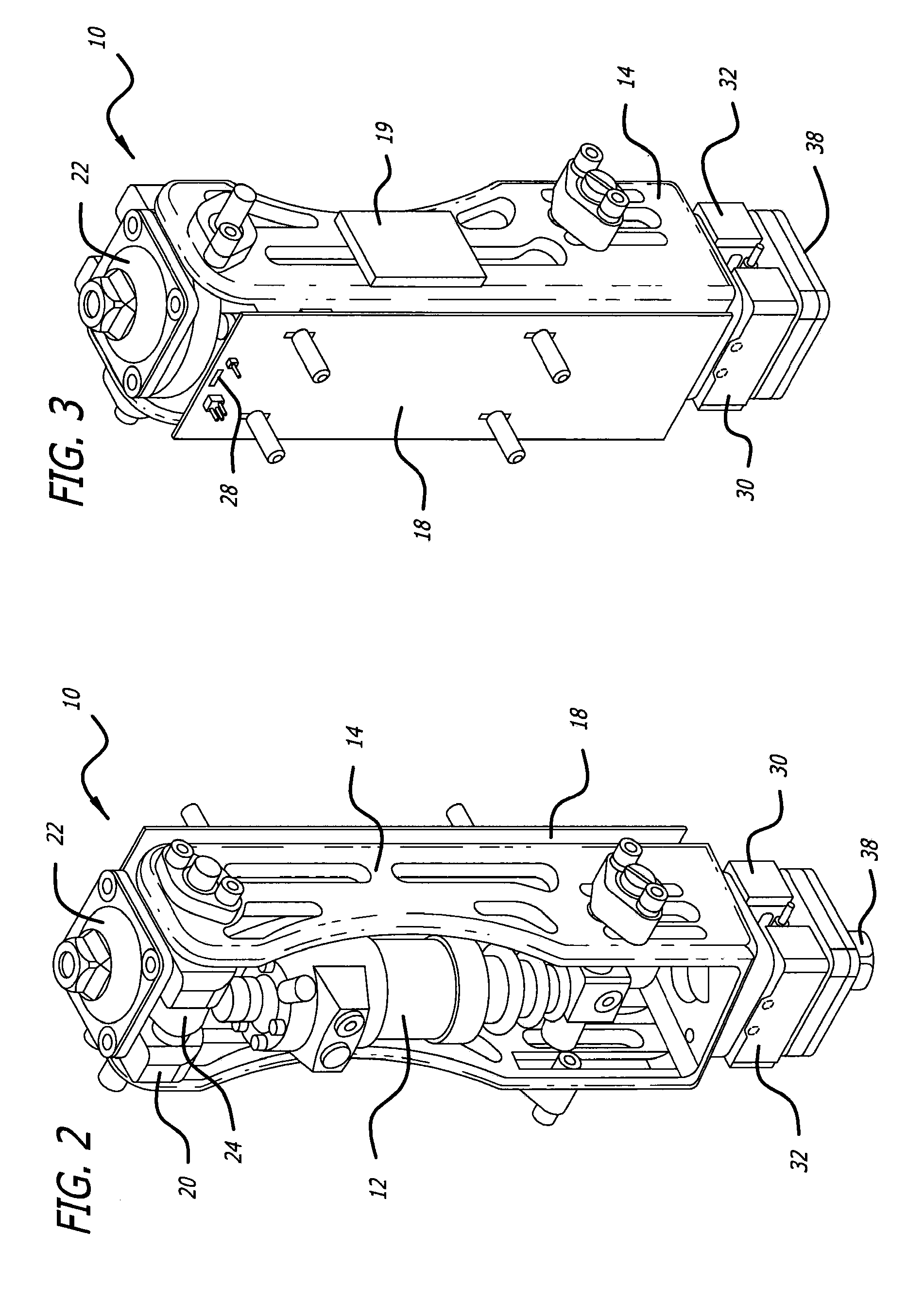Novel computer controlled prosthetic knee device
a computer controlled, knee-mounted technology, applied in the field of prosthetic knees, can solve the problems of increasing cost, burdening users, and complex knees that incorporate computer controlled actuators, and achieve the effects of less cost, energy saving, and light weigh
- Summary
- Abstract
- Description
- Claims
- Application Information
AI Technical Summary
Benefits of technology
Problems solved by technology
Method used
Image
Examples
Embodiment Construction
[0025] Makers of prosthetic knees have long attempted to mimic a natural walking gait. For purpose of illustration, this may be understood to be a reference to an exemplary walking gait cycle (level ground) as is graphically presented in FIG. 1. The chart depicts the knee position, along the y-axis, for an observed leg with respect to a percentage of gait cycle, along the x-axis. In the graph, the gait cycle initiates as the heel of the observed leg strikes the ground.
[0026] For each leg, a walking gait can be divided into two phases, a stance phase and a swing phase. The stance phase is defined as the period of time during which the foot of the observed leg is weighted. The swing phase is defined as the period of time when the foot of the observed leg is un-weighted. As a point of reference, the transition (T) from the stance phase to swing phase occurs at about 40 percent of the gait cycle.
[0027] The stance phase of a walking gait begins as the heel strikes the ground, indicated...
PUM
 Login to View More
Login to View More Abstract
Description
Claims
Application Information
 Login to View More
Login to View More - R&D
- Intellectual Property
- Life Sciences
- Materials
- Tech Scout
- Unparalleled Data Quality
- Higher Quality Content
- 60% Fewer Hallucinations
Browse by: Latest US Patents, China's latest patents, Technical Efficacy Thesaurus, Application Domain, Technology Topic, Popular Technical Reports.
© 2025 PatSnap. All rights reserved.Legal|Privacy policy|Modern Slavery Act Transparency Statement|Sitemap|About US| Contact US: help@patsnap.com



